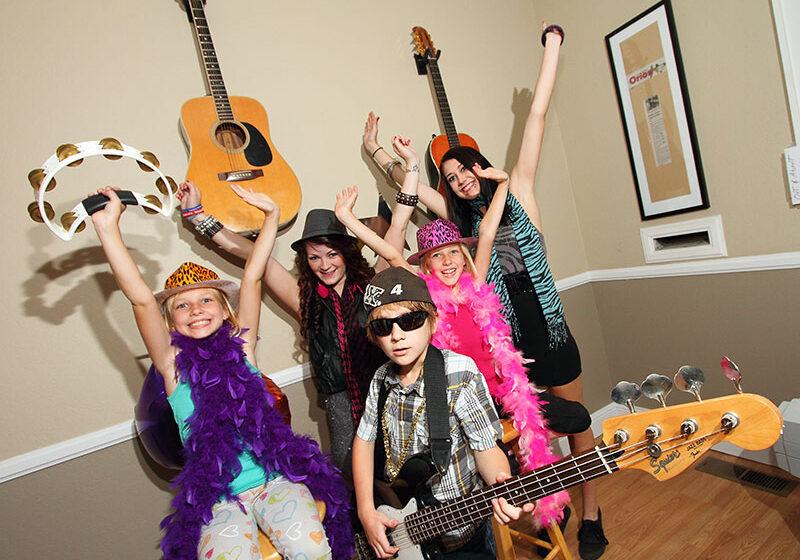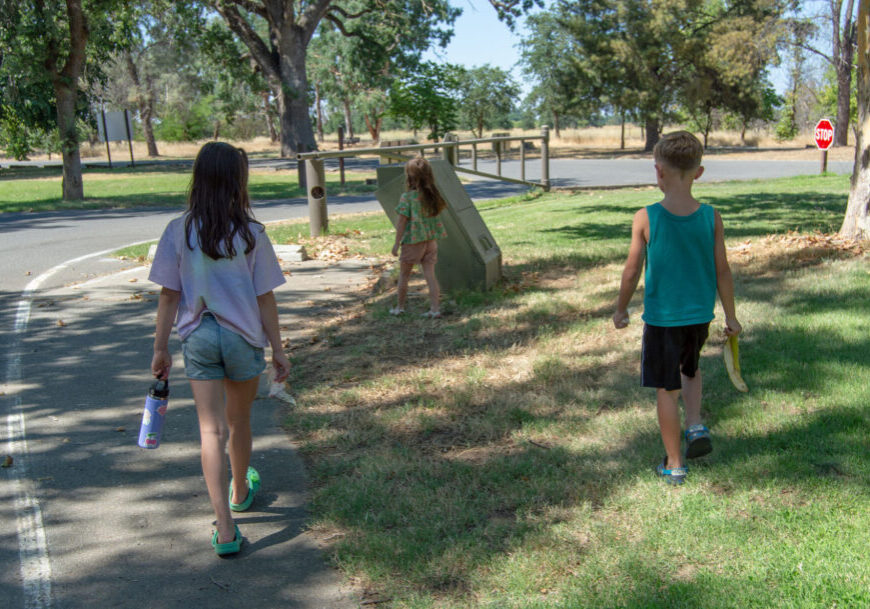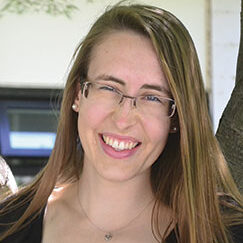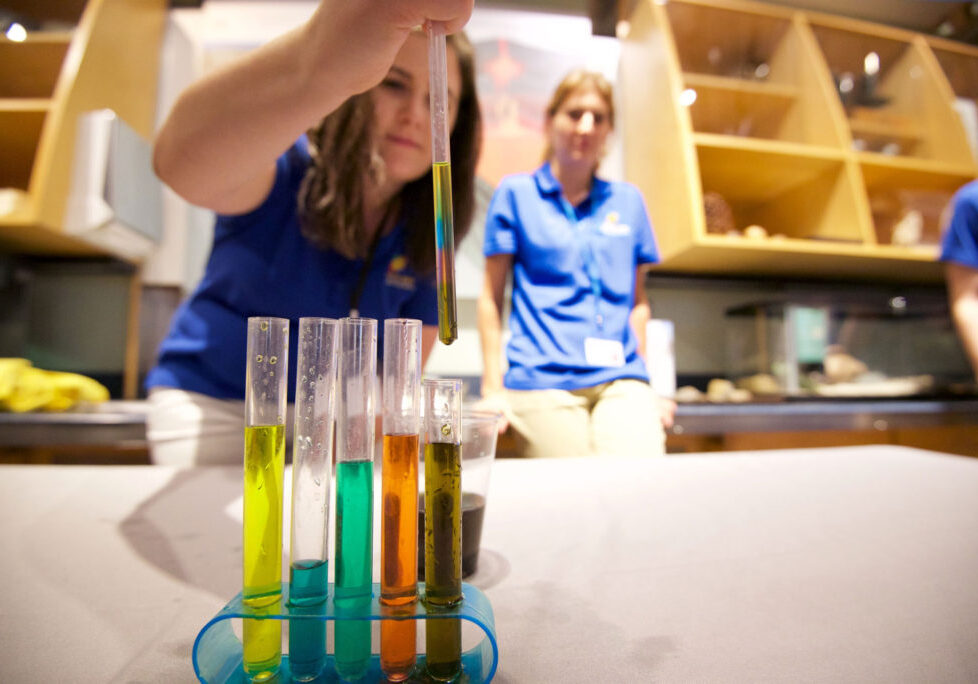The hot, clear skies of summer have set the stage for several “stellar” performances this August. From the monthly full moon, to the annual Perseid Meteor Shower, to the once-in-a-century total solar eclipse, these fascinating sky-high events offer chances to stir up the scientist in Junior—or yourself. They also offer free family bonding time, drawing the whole family out of doors and into an immense theater for performances that make life-long memories. As Jim Havlice of Mount Shasta Stargazers says, astronomy “gives us a sense of how small we are. We are just one little speck on a blue ball hanging off the edge of the solar system, in a universe that’s incredibly immense. Studying the sky puts us in our place.”

Perseid Meteor Shower
The Perseid Meteor Shower starts at the end of July, streaking the sky with increasing numbers of “shooting stars” until its peak on the night of August 12. Stargazers don’t need a telescope to view the show; only a little patience in an area free from light pollution. The light of the three-quarters-full moon may make the shower a little more difficult to distinguish, but the meteors will continue to pepper the night for a couple of weeks after the 12th.
Perseid meteors take their name from the constellation Perseus, from whence the meteors seem to emanate. Though the meteors can flash across any point in the sky, families may facilitate finding them by locating Perseus. “It’s good to know constellations,” says Havlice, “They are the roadmap of the sky.”
At the shower’s peak, about 80 Perseid meteors—shards of Comet Swift-Tuttle that burn as they pass through Earth’s atmosphere—fly through the night during a single hour. The meteors travel at a speed of 37 miles per second, usually burning into oblivion before they ever reach the Earth’s surface. The Perseid Meteor Shower occurs each year when the earth, in its trek around the sun, passes through the trail left by Comet Swift-Tuttle. In astronomical terms, this comet passes Earth quite frequently, but on a human timeline its visits come few and far between; Swift-Tuttle last passed the earth in 1992 and won’t return until 2126.
Total Solar Eclipse
“Total solar eclipse” describes a phenomenon in which the moon moves between the earth and the sun, completely blocking out the light of the sun in the middle of the day. On August 21st, 2017, the United States will experience its first total solar eclipse in nearly forty years. Though the north state will only see a partial eclipse, Havlice says nearly a million visitors are expected to flood Oregon, where viewers can see the total eclipse in areas like Albany and Salem.
Though securing overnight accommodations may prove difficult, families with an interest in the science of the sun may find a day trip to witness the total eclipse well worthwhile. Total eclipses have afforded scientists rare opportunities to learn more about parts of the sun otherwise obscured by its blinding light. Through past eclipses, for example, scientists have developed an understanding of the sun’s corona, seen as a glowing rim around the moon’s shadow during a total eclipse. A magnetized layer of plasma composed of iron heated to millions of degrees, the corona surrounds the sun and generates intense solar wind.
For the less scientifically-inclined, seeing the total solar eclipse can still hold great value. Such eclipses have long captivated imaginations, inspiring artistic depictions and inciting superstitions like the idea that eclipses poison food or predict bad health. Though science has disproved such myths, they illustrate the awe eclipses evoke.
Wherever your family may watch the eclipse from, safety must remain a priority. Looking directly at the sun, even when mostly blocked by the moon, can cause serious eye damage. NASA recommends using the certified eclipse glasses or handheld solar viewers produced by one of four manufacturers: Rainbow Symphony, American Paper Optics, Thousand Oaks Optical, or TSE 17. Alternatively, viewers can use a pinhole projection method to watch the progress of the eclipse via its shadow, rather than looking directly at the sun. NASA also offers an interactive 3D simulation of the eclipse called “Eyes on the Eclipse.”
What if your family can’t get enough of space shows? What if your kids keep asking questions about the night sky you don’t have answers to, or keep nagging you to explain the eclipse to them once again? Check out these neat north state venues that give your little ones the answers humans have about space—and help them seek the answers to the many questions that remain.
The information in this article comes from Space.com and NASA. Visit http://www.space.com/32868-perseid-meteor-shower-guide.html to learn more. Visit http://www.eclipse2017.nasa.gov to find exactly where you can view the total eclipse and gain extensive details on the event.
For Viewing the Sky from Home
Language Quest Software
309 N Mount Shasta Blvd, Mt Shasta, CA 96067
Bring a telescope home for zooming in on the night sky at your own convenience. Telescopes range from $315-$3000.
SunPower by Alternative Energy Systems
New Earth Market Shopping Center
876 East Ave, Chico, CA
Prepare to watch the eclipse with the proper eye protection. Eclipse viewing glasses will be available (limit 4 per family) whiles supplies last.
Viewing the Sky with the Experts
Chico Community Observatory
1 Observatory Way, Chico, CA 95973
Docents give tours of the night sky using high-powered telescopes. The observatory also features an “outdoor planetarium,” where groups can study the stars under the open sky. Open sunset to 11pm Fri, Sat & Sun, weather permitting. Free.www.facebook.com/pg/ChicoCommunityObservatory
Lassen Volcanic National Park Dark Sky Festival (August 11-13, 2017)
Kohm Yah-mah-nee Visitor Center
CA-89, Mineral, CA 96063
(Parts of the event are also held at other locations in Lassen Volcanic National Park)
This annual event, timed during the peak of the Perseid Meteor Shower, features nightly constellation tours; stargazing; astronomy activities including solar scope viewing and hands-on activities; films; discussions and more. The festival also includes Junior Ranger activities specifically designed for budding astronomers ages 5-12.
http://www.nps.gov/lavo/planyourvisit/dark-sky.htm
Schreder Planetarium in Redding
1644 Magnolia Ave, Redding, CA 96001
Using projections on the building’s domed ceiling, the planetarium brings the universe to life in new and exciting ways. Shows are available for $7 on specific nights, and some daytime field trips are available with advance reservation.
http://www.shastacoe.org/programs-services/schreder-planetarium
Science Works
1500 E Main St, Ashland, OR 97520
A hands-on museum offering a wide range of programs and activities, including free “star parties” for star identification with staff. The museum will be open from 9am to 5pm on August 21st as a venue for the total solar eclipse through their event “The Great American Eclipse,” included in the regular $12 admission price ($10 for kids and senior citizens). http://www.scienceworksmuseum.org
Shasta Astronomy Club
Oak Bottom Marina at Whiskeytown Lake Marina
12485 CA-299, Shasta, CA 96087
Holds two “star parties” a month, Friday night astronomy programs during the summer and special programs for events like the Perseid Meteor Shower and the solar eclipse, during which limited access to telescopes and solar-safe glasses will be available. See our North State Parent calendar for details on these events and Symphony on the Beach, a stargazing activity on August 26th. Free. http://www.shastaastronomyclub.org
Posted in: Out & About
Comment Policy: All viewpoints are welcome, but comments should remain relevant. Personal attacks, profanity, and aggressive behavior are not allowed. No spam, advertising, or promoting of products/services. Please, only use your real name and limit the amount of links submitted in your comment.
You Might Also Like...

How To Create Precious One-On-One Time With Your Kids
Growing up as an only child, I was not spoiled with THINGS, but instead, my parents gave me the gift of one-on-one time. I treasured that time and am learning […]

New Chico Business Offers Kids And Grownups A Rockin’ Good Time
As a parent, I’m always on the lookout for interesting birthday party ideas for my kids. We don’t do anything too over-the-top (no TLC reality show parties for me) but […]

Leave No Trace
When my brother and I were around 8 and 10 years old, our parents started taking us on wilderness camping trips. They taught us as a matter of course to […]

Pickleball Fun Takes Over The Courts
According to news sources across the nation, pickleball is America’s fastest- growing sport. Often described as a cross between badminton, tennis and ping pong, it’s an easy game for beginners […]



